It’s the end of summer and lots of gardens and farmer’s markets are overflowing with fresh produce. What can we do to preserve the abundance?
(The audio interview on food canning with Carrie Kenner is found here.)
There are many ways to preserve the harvest. Food can be dehydrated in a food dehydrator, or frozen, fermented, or canned. I’d like to talk today about canning since it is readily available for many people to do, doesn’t required expensive equipment, and – best of all – results in shelf-stable food that doesn’t require a fridge or freezer to store. Canned food, when properly stored, can maintain its quality for up to one year.
Why should people can their own food, when grocery store shelves are overflowing with every type of canned food imaginable?
I think there are two main benefits to canning your own food. One, you have control over your food source. There are increasing benefits of eating local, organic and GMO-free food. Grocery store canned foods are not local, and you don’t know if they are GMO-free without GMO labeling in place. Canning home-grown or farmers market produce assures local and GMO-free, and organic if that is what you choose.
Second, if you have your own garden, you can grow what you like to eat – lots of eat – and then can it so you can enjoy it all year long.
Other benefits come from the simple satisfaction of the canning process. It’s fun, it’s resourceful, it’s a good way to spend a day or weekend, and it can be a great community-building or family-centering activity. There is nothing more satisfying than seeing your shelves lined up with gorgeous food that you have canned and get to enjoy all winter long.
Why do YOU can, and how did you get started?
I can because I have a large garden and it’s one way I preserve my harvest. I also can because, when I do it on a large scale, I save money over buying organic, GMO-free canned foods.
I got started 4 years ago when I bought a box of peaches, canned them all up, and was able to include canned peaches in my son’s school lunch for the entire school year. I felt like I was sending a little serving of sunshine with him each day through our long, gray winter. That was so rewarding! From then I was hooked, and started canning all sorts of things that I love to eat. I love to create, and am a die-hard do-it-yourselfer, so canning falls right in line with that way of living for me.
Certainly botulism or spoilage are possible. So let me tell you how those things happen so you can know how to prevent them from happening…
Bacteria require moisture and warmth to grow. They can also be killed by acidic conditions, or heat. But if you don’t heat them hot enough, or long enough at the right temperature, you can grow – instead of kill – the bacteria. And the specific spore that can turn into botulism also requires an anaerobic environment (no air), which is what the sealed jar is. So to prevent botulism, the food must either be high in acid (like most fruits, or pickled foods) or heated higher than the boiling point (240 degrees minimum). The key is to use the indicated amount of acidifier (typically lemon juice or vinegar or citric acid), and to process at the temperature and for the amount of time specified in a recipe. Don’t changes these things!
You can preserve many foods by canning, with some special restrictions. More important than the list I am about to give you, is to always follow a tested recipe. If you use a tested recipe, you can safely can produce – fruit and vegetables. You can also safely can meats, soups, and sauces. Low-acid foods require a special pressure canner which raises the processing temperature above the boiling point to a minimum of 240 degrees. High-acid foods can be processed in a large pot of boiling water called ‘water bath’ canning. You cannot safely process foods that contain dairy products, pasta, grains, or rice, or foods that use flour as a thickener (such as gravies), or mushy or pureed foods like baby food, pumpkin pie filling, or refried beans. And if you are using a pressure canner, you should have its gauge checked each year before you use it.
What is also important to know is that not all ‘sweet’ foods (like jams or ice cream toppings) can be processed in the same way, nor can all ‘sauces’ (like tomato sauce or ). It’s the acidity of the ingredients that determines if they must be pressure canned or processed in a boiling water bath.
I keep hearing about ‘tested’ recipes. What does that mean and can I just use any recipe I find on the internet?
A tested recipe is one which has been tested in a laboratory to make sure it meets the requirements to prevent botulism spores or bacteria from surviving in the processed food. While canning is definitely one of the cooking ‘arts’, it is also a scientific process. There are many recipes on the internet and even in some cookbooks that have not been tested. Don’t use them. To find tested recipes, go to any University Extension Service site, the National Center for Home Food Preservation, or Ball or Kerr Canning recipe books. There are also some great recipe books out there – So Easy to Preserve, The Joy of Jams, Jellies, and Other Sweet Preserves; Complete Guide to Home Canning and Preserving, Canning for a New Generation, Well-Preserved, Food in Jars…
Using your grandma’s old recipe, or a recipe not intended for canning, or a canning recipe from someone’s blog can be dangerous. Even if people have used it and lived. If it isn’t tested, or you adjust a tested recipe in any way which may change the acidity of the overall product, or you don’t process it for the proper time and temperature, you could be creating an unsafe food product. In general, you can modify dried herbs and seasonings, but not fresh herbs. You can reduce the amount of sugar in jams, but the quality will be affected or it may not set properly. And you must use commercial vinegar or lemon juice in recipes as the acidity level is standardized so your food will be the proper acidity.
Individuals can have their own recipes or processed foods tested, but it is quite expensive.
So now that we know how to prevent bolutism and spoiling, what kinds of equipment does one need to can?
You will need to obtain canning jars, lids and bands. Canning jars run about $10-15 a dozen for jelly or pint jars, around $20 for one dozen quart jars, and come with lids and bands. You can reuse the jars and bands over and over again, but you do have to use new lids for every jar you can (there are new lids on the market which can be re-used, but they cost a bit more). One-use lids cost about $6 per dozen; reusable lids cost about $10 per dozen. Then, you need a large pot that will hold all the jars with enough room for 1″ of water to cover the jars. There are additional tools that make the job even easier – a jar rack or jar lifter, a wide-mouth funnel, a special stick with a magnet on the end to fish the lids out of a pan of hot water. You don’t have to sterilize your jars or equipment prior to putting food into them, unless they will be processed for less than 10 minutes.
Want to learn more?
Many County or University Extension Services offer classes on canning and other methods of food preservation. In Seattle, canning classes are offered through Seattle Tilth, and by various individuals who are certified Food Preservation Educators.
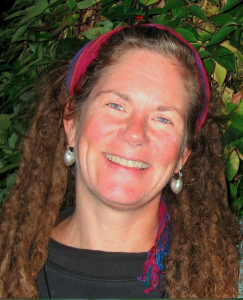 Carrie Kenner is a certified Food Preservation Educator who lives, plays, and grows in Seattle, WA. You can find out more about Carrie Kenner at www.bigbellyservices.com. She raises produce, chickens and ducks at her urban homestead, and helps raise families through her work as a childbirth educator and birth doula. Growing food & growing families is her passion. She grows, cans, ferments, dries, cooks, bakes and composts food – all on her small urban lot. Carrie believes that healthy and nourishing food isn’t a privilege, it’s a right. Her vision is for all people to have access to good food right in their own backyards or neighborhoods, and that they know how to grow it, store it, and prepare it so they may nourish themselves into the beautiful beings that we all are intended to be. Growing as much of her own food as possible to last throughout the year is one way she manifests that vision for herself. Carrie invites you to join her and learn one new way to create your own food supply each year. Email Carrie: carrie@bigbellyservices.com.
Carrie Kenner is a certified Food Preservation Educator who lives, plays, and grows in Seattle, WA. You can find out more about Carrie Kenner at www.bigbellyservices.com. She raises produce, chickens and ducks at her urban homestead, and helps raise families through her work as a childbirth educator and birth doula. Growing food & growing families is her passion. She grows, cans, ferments, dries, cooks, bakes and composts food – all on her small urban lot. Carrie believes that healthy and nourishing food isn’t a privilege, it’s a right. Her vision is for all people to have access to good food right in their own backyards or neighborhoods, and that they know how to grow it, store it, and prepare it so they may nourish themselves into the beautiful beings that we all are intended to be. Growing as much of her own food as possible to last throughout the year is one way she manifests that vision for herself. Carrie invites you to join her and learn one new way to create your own food supply each year. Email Carrie: carrie@bigbellyservices.com.
Comments
How sinus rinsing relieves cold, flu and allergies
We don’t even have the cold and flu season behind us and we’re almost ready to welcome another nose-blowing agent: SPRING allergies! For all of
Let’s give children tools to cope with stress😥
Do you know children between the ages of 8-17? If so, online SKY Kids & Teens programs are designed to help children gain skills to
Struggling with Stress and Anxiety Blues?
Research tells us which practices help. Anxiety disorders are now the most common mental disorder for Americans; 40 million adults are affected by it. During

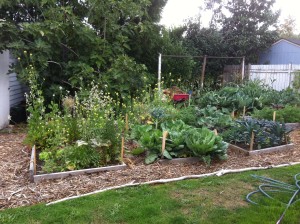
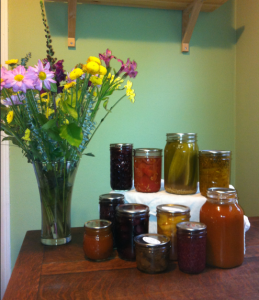
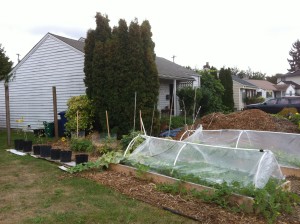
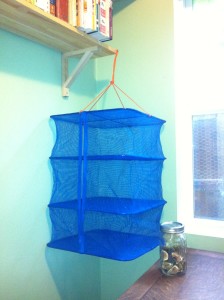
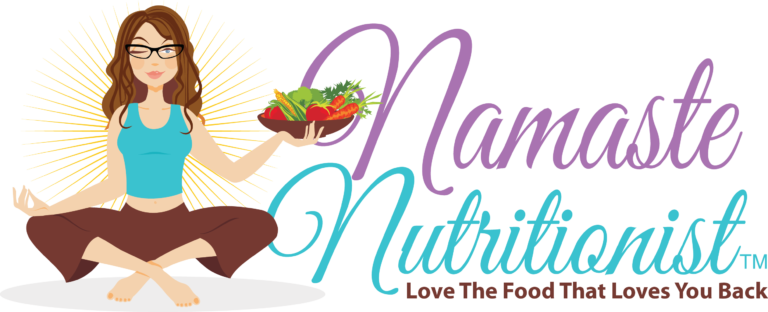
3 responses to “How to Can Your Own Food”
Looking good Carrie! I love the hoops you created. Nice podcast.
Thanks for publishing this interview!
My pleasure, Jason! Did you recently present something on canning in Toastmasters?